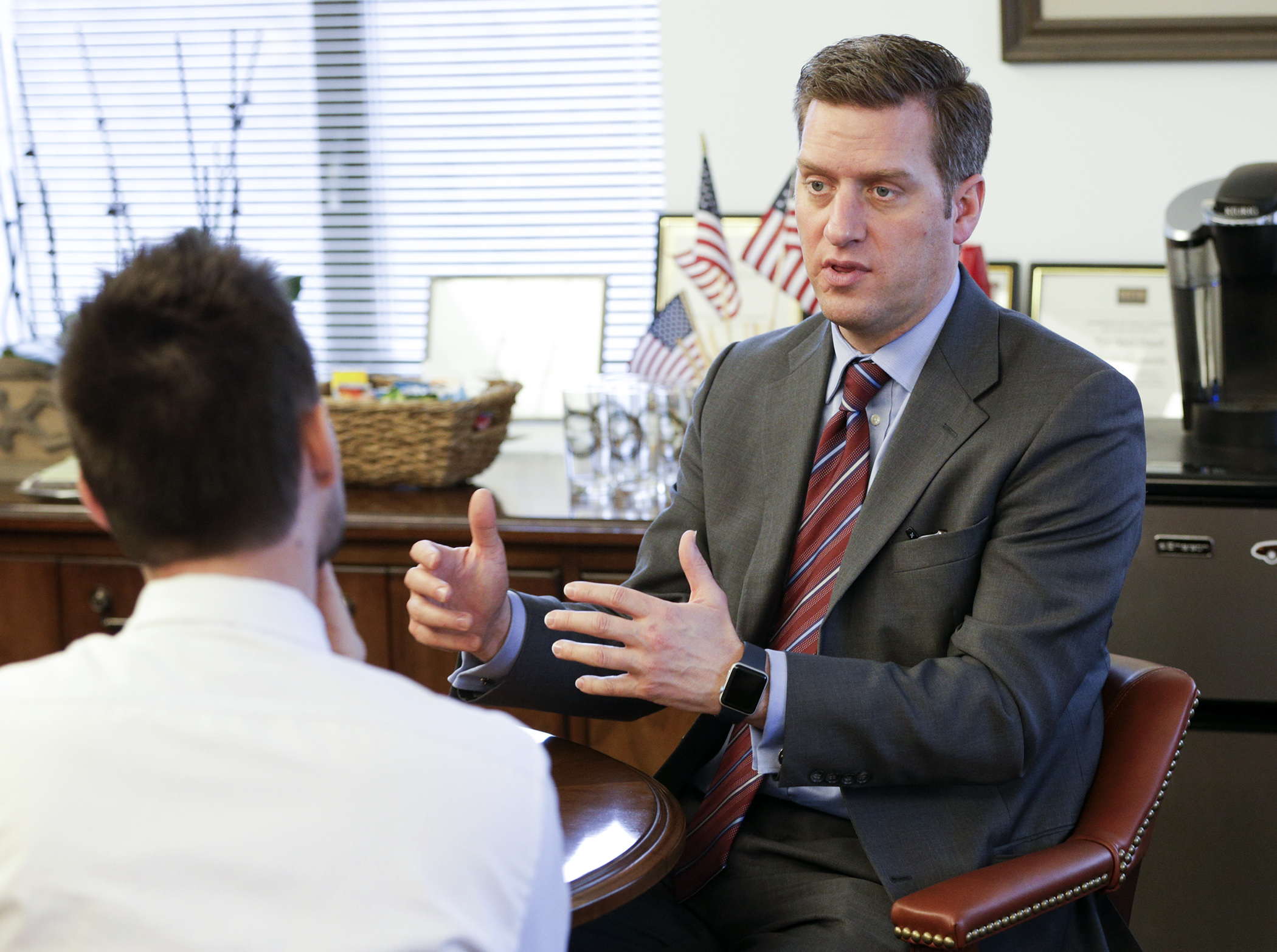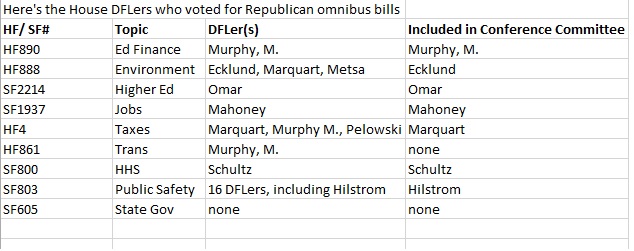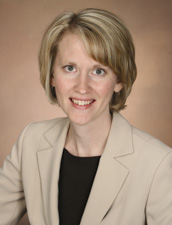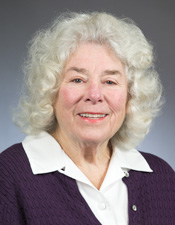'Inefficient and efficient at the same time': It’s conference committee season

Legislation packed with new or changing policies and billions in state-funded programs have made their way through the committee process, through both the House and Senate and, because of discrepancies in their wording and funding, now have to go through another similar cycle.
Because language in the House version differs from the Senate version in each of these omnibus bills, a new panel with up to 10 legislators, usually representing both parties, must determine what a final bill will look like before each chamber approves it and sends it to the governor. In the next few weeks, the legislative calendar is likely to be brimming with conference committees.
A conference committee consists of three to five members from each chamber – often called “conferees” – tasked with reconciling differences between House and Senate proposed legislation. It’s another round of committee-like work, with additional chances for outside input as legislators head into the session’s homestretch.
Joint rules outline what the conference committees can and can’t do. For instance, conference committees can’t schedule meetings between midnight and 7 a.m., but can vote to extend their meetings past midnight; or chairs must rotate between representatives and senators every calendar day.
Conference committees can’t appropriate more money than the initial bills or amendments included unless the House speaker and the Senate majority leader approve them. Additionally, conferees can’t add rulemaking power to agencies and departments unless they, too, were included in the House or Senate bill or amendments.
If conferees agree, a written report is published. The report returns to both the House and the Senate for votes, beginning with the original chamber.
“This process is designed to be inefficient and efficient at the same time,” Rep. Sarah Anderson (R-Plymouth) said. “Inefficient in the sense that you need to make sure everybody has a voice in it, but efficient in the sense that that’s why we have committees in the first place – to have people focus on one area and bring it to the body as a whole.”
In the sports world, there are events like the Stanley Cup Playoffs and the NCAA basketball championships where teams live and die each round. In the Legislature, Anderson said, conference committees are “the semifinals” in the life of a bill.
So far this year, two conference committees met and passed reports. The first established a state-funded insurance relief package and the second implements a reinsurance program. Others started their work Tuesday and more will continue throughout session.
Committee membership
There aren’t any official rules dictating conference committee membership.
When House Speaker Kurt Daudt (R-Crown) appoints House members to conference committees, in the case of omnibus bills, he said he first looks at bill sponsors, vice-chairs of related committees and members with significant provisions in the bill.
 DFL members who supported respective omnibus bills and who have been assigned to conference committees.
DFL members who supported respective omnibus bills and who have been assigned to conference committees.There is a trend for minority party members, too: If a member of the minority party votes for the original bill – this year, the number is scant of DFLers voting for Republican omnibus bills – they’re probably assigned to that omnibus bill’s committee.
Rep. Mary Murphy (DFL-Hermantown) was the only DFL member to vote for HF890*/SF718, the education finance omnibus bill, and she was assigned to that conference committee. Likewise, Rep. Ilhan Omar (DFL-Mpls) joined every Republican in supporting HF2477/SF2214*, the higher education finance package, and Rep. Jennifer Schultz (DFL-Duluth) was the lone minority vote in favor of HF945/SF800*, the omnibus health and human services bill. They are both on those conference committees.
Asked about her vote on the bill and her conference committee membership, Murphy cited “past experience in education,” as one of the reasons Daudt might have appointed her to the committee.
“At this time, the economy of the state is good,” Murphy said. “I’d like to see education be the highest priority for the children of Minnesota… I’d like my voice heard.”
There are exceptions to that trend. Murphy was also the lone DFLer to vote for HF861, the omnibus transportation finance bill, but that conference committee’s House membership is comprised of all Republicans. Sen. Dan Sparks (DFL-Austin) is the only minority party representative.
Anderson chairs the House State Government Finance Committee, which produced what is now HF691/SF605*. Not a single House DFLer voted for Anderson’s bill, and in turn, none are on that conference committee. Sen. Carolyn Laine (DFL-Columbia Heights) is the lone DFLer on the 10-person committee.
“Generally there is a belief in the Legislature – I don’t know if it stands for the Senate, but for the House at least the practice has been – if you do vote for the bill and you’re in the minority party, it increases your chances to serve on that conference committee,” Anderson said.
Daudt said flat-out that although “we want [DFL] input,” people who didn’t vote for the bill – minority and majority party members – don’t get a conferee spot.
“We put a Democrat on if a Democrat voted for the bill,” he said in an interview. “If no Democrats voted for it, no Democrats get to be on the conference committee. That’s been pretty standard operating procedure. If the minority doesn’t vote for it, they don’t get a spot on the conference committee.”
Omar is in a unique spot, too. While Senate Republicans have placed at least one first-timer on each of these committees, she is the only freshman House conferee.
High hopes
Some lawmakers assume bills with slight differences will automatically go through the conference committee process, like in January when Daudt and Rep. Joe Hoppe (R-Chaska) announced that conferees would best tailor the HF1/SF1* insurance premium relief bill. Others end up in conference committees because of gaping differences in longstanding political battles, like the Real ID bill.
With the spending-and-policy-changing omnibus bills, however, conference committees usually have much more to compare. With that, every party is optimistic for their ideals to emerge.
Murphy said her efforts will focus on increasing education spending levels closer to Gov. Mark Dayton’s proposal than the Republican proposals passed by both chambers.
“Every conference committee is different,” Murphy said. “The conference committee depends on the personalities of the individuals, as well as the goals of the people of Minnesota – and in [our] case, the children of Minnesota.
“It’s not an easy task – it’s never easy – but there should be enough money to go around,” she said.
How to spend a $1.65 billion projected surplus is driving a wedge between the administration, which wants to increase spending on education, transportation and health care, and the Republican majorities controlling both legislative chambers, which emphasize reduced government programs and large reductions in tax collection.
Anderson said she and Sen. Mary Kiffmeyer (R-Big Lake) reached out to the administration, hoping for input on priorities, believing answers would quash any concerns from the governor. The governor’s appointees railed against Anderson’s bill during a committee hearing – and they will join the public with more input during conference committee meetings.
The ultimate goal is, of course, to get the bills signed into law.
“I’m excited about this process,” Anderson said. “It’s kind of like you get through the initial piece and now it’s like you get to kind of fine-tune things, if you will. So I’m looking forward to getting feedback from the senators and putting together a good product the governor will sign into law and – again, I can’t say this enough – I hope that he participates in the process and they don’t have a closed door to our thoughts in the Legislature.
“We all represent the same people he represents and so [I’m] just looking for his active participation in this process,” she added.
Daudt said he’s “pretty hands off” when it comes to conference committee details, leaving the lawmakers who heard public testimony and who talked to fellow legislators to dig into the minutiae. He’ll become more involved when it comes to negotiating with Dayton.
“We want to engage the governor in that process because we want to put bills on the governor’s desk that the governor will sign,” he said.
Oh, and if there’s anyone who thinks conference committees are a façade for smoke-filled backroom dealings ruled by an iron-fisted speaker, Daudt said that isn’t the case. “That happens almost never,” he said.
Related Articles
Search Session Daily
Advanced Search OptionsPriority Dailies
Ways and Means Committee OKs proposed $512 million supplemental budget on party-line vote
By Mike Cook Meeting more needs or fiscal irresponsibility is one way to sum up the differences among the two parties on a supplemental spending package a year after a $72 billion state budg...
Meeting more needs or fiscal irresponsibility is one way to sum up the differences among the two parties on a supplemental spending package a year after a $72 billion state budg...
Minnesota’s projected budget surplus balloons to $3.7 billion, but fiscal pressure still looms
By Rob Hubbard Just as Minnesota has experienced a warmer winter than usual, so has the state’s budget outlook warmed over the past few months.
On Thursday, Minnesota Management and Budget...
Just as Minnesota has experienced a warmer winter than usual, so has the state’s budget outlook warmed over the past few months.
On Thursday, Minnesota Management and Budget...

